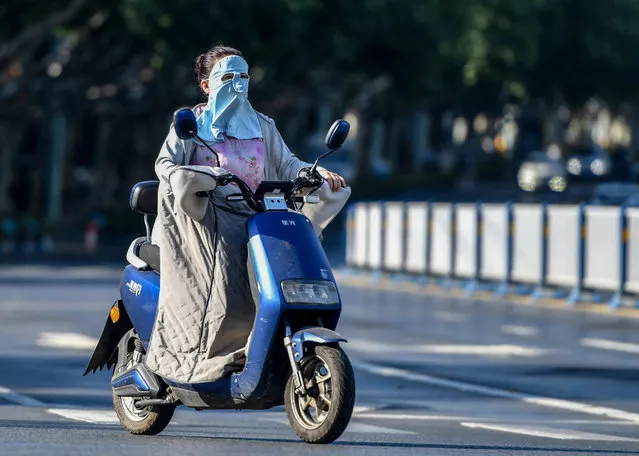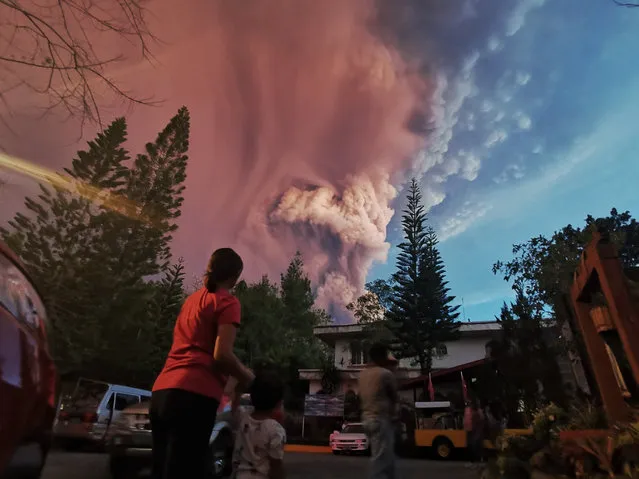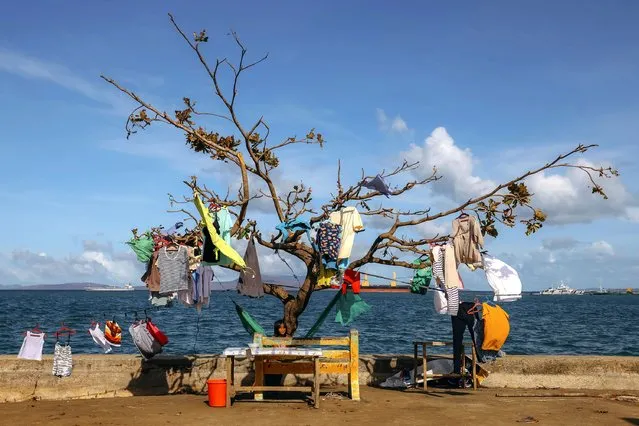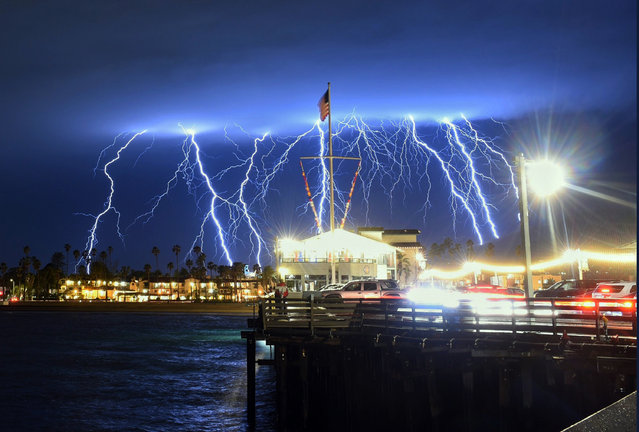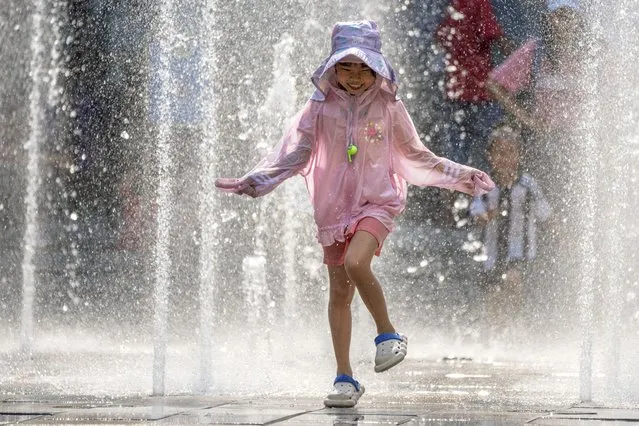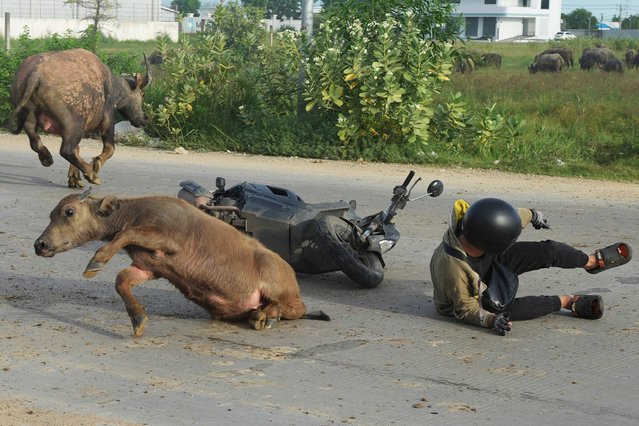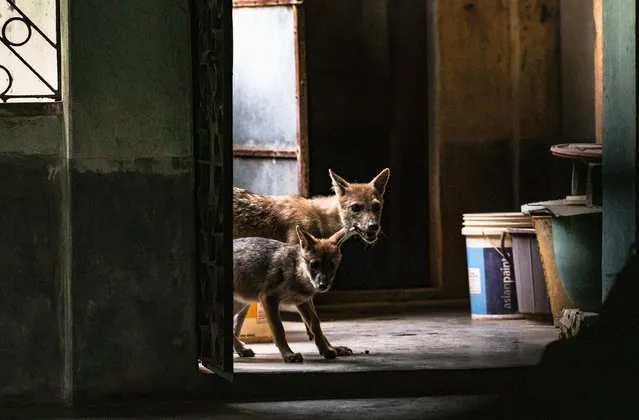
A wild golden jackals (Canis aureus) mother and her cub entered a house for food at noon. The baby was curiously sniffing all things beside him trying to enter the room of the house and her mother immediately roared and warned her. This photo was taken ahead of the International Day for Biological Diversity 2022 at Tehatta, West Bengal, India on May 21, 2022. (Photo by Soumyabrata Roy/NurPhoto via Getty Images)
30 May 2022 04:27:00,post received
0 comments

